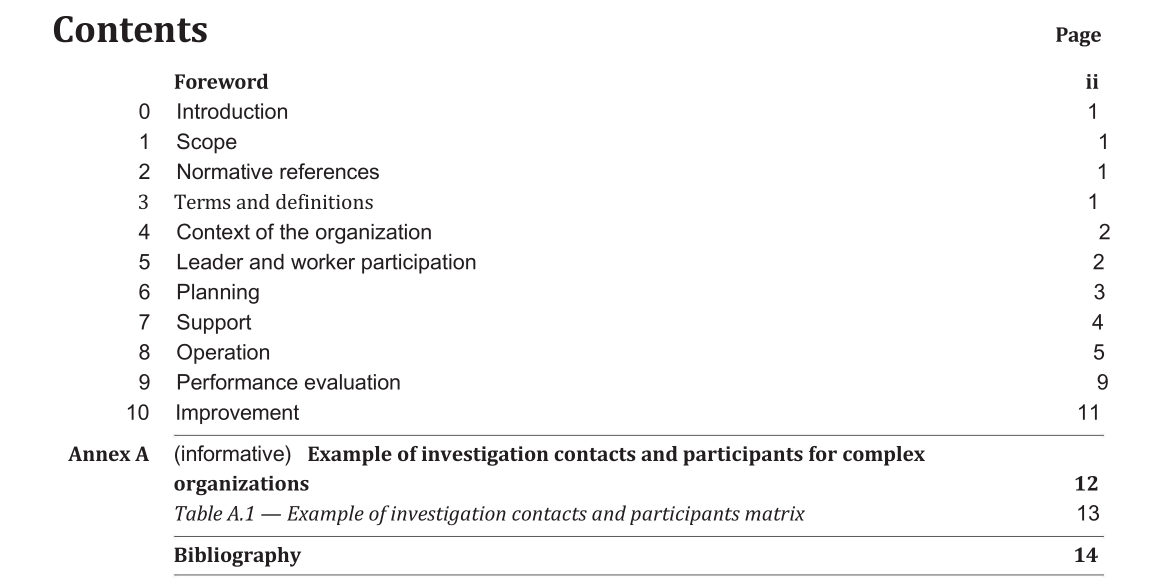BS 45002-3:2018 pdf download.Occupational health and safety management systems – General guidelines for the application of ISO 45001
3 Terms and definitions
COMMENTARY ON CLAUSE 3 NOTE There are a number of terms defined in BS ISO 45001, including commonly used terms. However, when using BS ISO 45001 it is important to take note of these technical definitions to ensure there is no misunderstanding in its application. For example, small businesses do not always realize that the term “organization” refers to small businesses as well as larger companies (or public bodies, charities, etc). Organization can also be used to describe one part of a business, e.g. one department or one site – if that is the extent of the OH&S management system. Similarly, the term “top management” refers to whoever directs or controls the organization – the top level decision maker(s). In practical terms, top management can mean a small business owner, the executive board or, in a non-hierarchical structure, everyone involved in taking high level decisions. The definition of “worker” is also worth noting. In BS ISO 45001 worker is all-inclusive and refers to everyone working under the control of the organization, including business owners, executive boards, senior managers, interns, volunteers, all employees and contractors. All of the terms and definitions within BS ISO 45001 can be found on the ISO Online Browsing Platform: http://iso. org/obp [Last viewed 31 July 2018]. For the purposes of this British Standard, the terms and definitions given in BS ISO 45001 and the following apply.
4 Context of the organization
Organizations can improve the effectiveness of accident/incident investigation by proportionate and focused consideration of their context. Both external and internal factors are likely to be relevant.
Relevant external factors could include:
a) relevant legal and other requirements, e.g. RIDDOR [1], industry standards;
b) the expectations of external parties (e.g. openness), such as customers, suppliers, contractors,trade associations, relevant trade unions, members of the public, emergency services; and
c) supplier changes to product/equipment specifications, and how these are communicated.
Organizational size, complexity and the nature of its health and safety risks are all relevant internal factors. Other internal factors might include:
1) the internal culture of the organization, e.g. a no‑blame approach and willingness to learn lessons;
2) the expectations of workers, e.g. worker involvement (including worker representatives where they exist) in investigations; and
3) the need to ensure and maintain effective organizational competence and control in identifying and implementing corrective actions.
Any recent changes within or external to the organization that might have contributed to the incident should also be taken into account.
BS 45002-3:2018 pdf download
